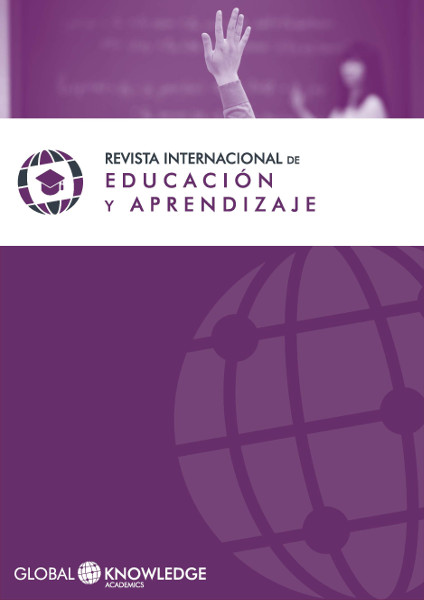Innovative Teaching Strategies Applied to University Courses in Chemistry
DOI:
https://doi.org/10.37467/gka-revedu.v2.612Keywords:
Audiovisual Media, Undergraduate Students, Chemistry, LearningAbstract
Audiovisual media are nowadays appropriate tools to help illustrate the development of lectures by university professors. The 21st century students use them at ease, finding them an excellent companion to study certain subject topics. In particular, in the field of experimental sciences –as Chemistry- the advantages of using these materials are clear, both in portraying in a more visible way some abstract concepts and related phenomena and in the student's own approach to more practical aspects related to professional skills and practice upon completion of studies. This paper evaluates the results of applying the new technologies in the teaching of chemistry to undergraduate students of the University of Navarra. It also aims to target examples of the professional day to day activity of a Chemist and provide sound theoretical background as well as practical approaches to problem-solving tasks in any areas of Chemistry.
Downloads
Global Statistics ℹ️
|
436
Views
|
243
Downloads
|
|
679
Total
|
|
References
Alonso Tapia, J. (1995). Motivación y aprendizaje en el aula. Cómo enseñar a pensar. Madrid: Santillana.
Álvarez, J.I.; Fernández, J.M.; Isasi, J.R.; Durán, A.; Navarro-Blasco, I.; González-Gaitano, G.; Sirera, R. (2013). Incorporación de vídeos e infográficos de interés a la docencia en Química. Pamplona: Universidad de Navarra. Disponible en: http://www.unav.edu/documents/29813/3102148/pidciencias1-2012-2013.pdf.
Brockbank, A., McGill, I. (1998). Facilitating Reflective Learning in Higher Education. London: Society for Research into Higher Education.
Fernández, J.M.; Álvarez, J.I.; Navarro-Blasco, I.; Durán, A. (2013). Mejora del perfil profesional del químico en la enseñanaza de Química Inorgánica y Analítica. Pamplona: Universidad de Navarra. Disponible en: http://www.unav.edu/documents/29813/3102148/pidciencias2-2012-2013.pdf.
Fry, H.; Ketteridge, S.; Marshall, S. (2003). A Handbook for Teaching y Learning in Higher Education. Enhancing Academic Practice. London: Routledge Falmer.
Fullan, M. (2002). Liderar en una cultura de cambio. Barcelona: Octaedro.
Gairín, J.; Feixas, M.; Guillamón, C.; Quinquer, D. (2004). “La tutoría académica en el escenario europeo de educación superior”. Revista Interuniversitaria de Formación del Profesorado, 18: 66-77.
González J., Wagenaar, R. (2003). Tunning Educational Structures in Europe. Bilbao: Universidad de Deusto-Universidad de Groningen.
Ortega Cuenca, P.; Ramírez Solís, M. A.; Torres Guerrero, J. L.; López Rayón, A. E.; Servín Martínez, C. Y.; Suárez Téllez, L.; Ruiz Hernández, B. (2007). “ Modelo de Innovación Educativa. Un marco para la formación y el desarrollo de una cultura de la innovación”. RIED. Revista Iberoamericana de Educación a Distancia 10(1): 145-173. DOI: https://doi.org/10.5944/ried.1.10.1023
Pérez i Garçías. (2002). “Nuevas estrategias didácticas en entornos digitales para l a enseñanza superior”. En Didáctica y tecnología educativa para la Universidad en un mundo digital , Salinas, J y Batista, A. (coords.). Universidad de Panamá: Imprenta Universitaria, Panamá.
Ramsden, P. (2003). Learning to Teach in Higher Education. Londres: Routledge Falmer. DOI: https://doi.org/10.4324/9780203507711
Salinas, J. (2004). “ Innovación docente y uso de las TIC en la enseñanza universitaria” . RevistaUniversidad y Sociedad del Conocimiento 1(1): 1-16.
Schmuck, R. (1972). Handbook of Organization development in schools. National Press Oregón.
Tomusk, V. (2006). Creating the European Area of Higher Education: Voices from the periphery. Dordrecht: Springer. DOI: https://doi.org/10.1007/978-1-4020-4616-2
Zabalza, MA. (2002). La enseñanza universitaria: el escenario y sus protagonistas. Madrid: Narcea.
Downloads
Published
How to Cite
Issue
Section
License
Those authors who publish in this journal accept the following terms:
-
Authors retain copyright.
-
Authors transfer to the journal the right of first publication. The journal also owns the publishing rights.
-
All published contents are governed by an Attribution-NoDerivatives 4.0 International License.
Access the informative version and legal text of the license. By virtue of this, third parties are allowed to use what is published as long as they mention the authorship of the work and the first publication in this journal. If you transform the material, you may not distribute the modified work. -
Authors may make other independent and additional contractual arrangements for non-exclusive distribution of the version of the article published in this journal (e.g., inclusion in an institutional repository or publication in a book) as long as they clearly indicate that the work was first published in this journal.
- Authors are allowed and recommended to publish their work on the Internet (for example on institutional and personal websites), following the publication of, and referencing the journal, as this could lead to constructive exchanges and a more extensive and quick circulation of published works (see The Effect of Open Access).













